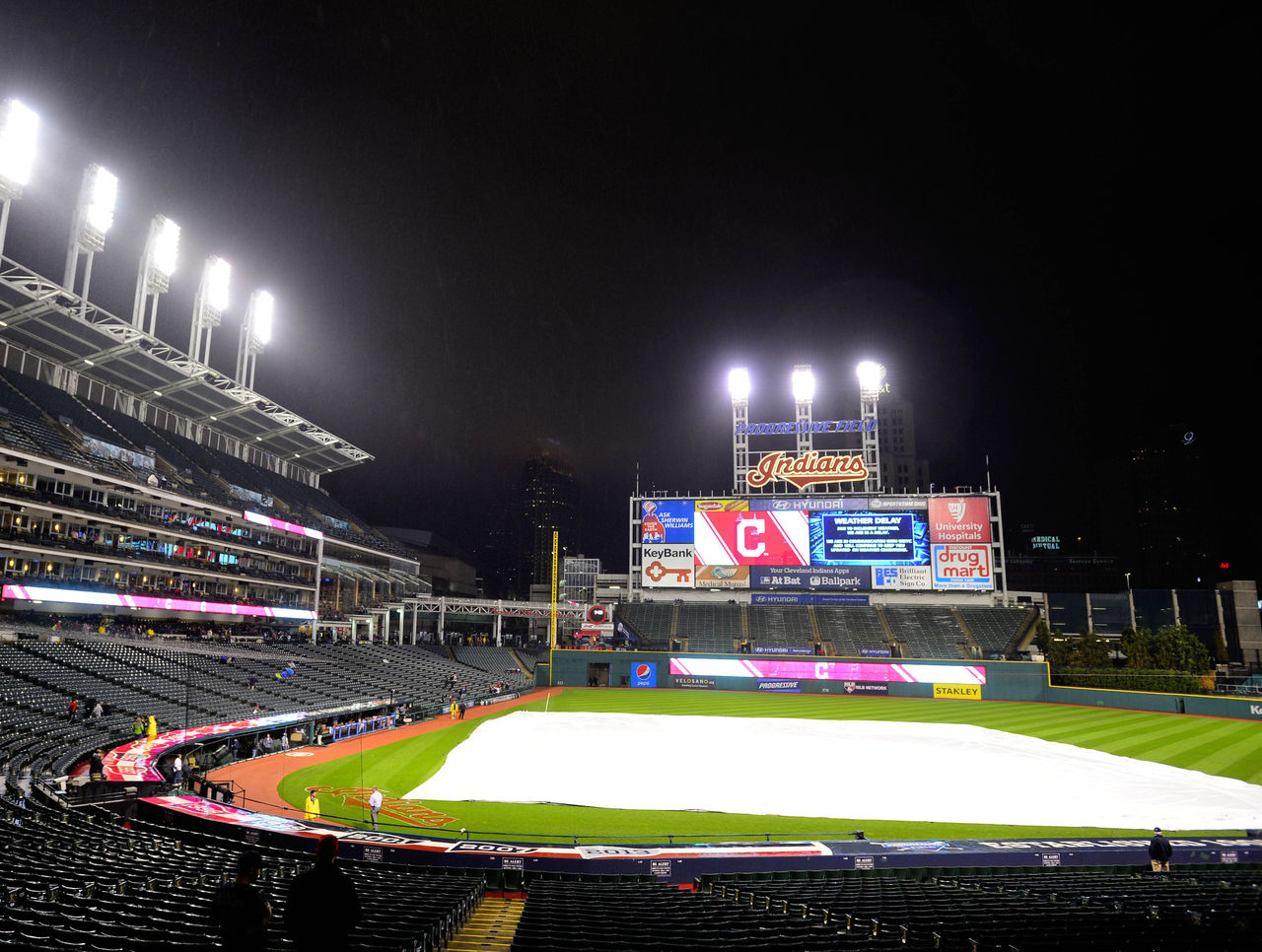Watching the weather in daily fantasy baseball
Follow theScore's fantasy feed on Twitter (@theScoreFantasy) for the latest news, features and more.
While you may not need a weatherman to tell you which way the wind blows, it sure can expedite the process. This is especially true if you're following a baseball game in Los Angeles while you're sitting in your apartment in Boston. Weather impacts baseball unless the game is at one of seven domed ballparks. But how can this factor into daily fantasy?
Domed Stadiums: Chase Field (Arizona Diamondbacks); Marlins Park (Miami Marlins); Miller Park (Milwaukee Brewers); Minute Maid Park (Houston Astros); Rogers Centre (Toronto Blue Jays); Safeco Field (Seattle Mariners); Tropicana Field (Tampa Bay Rays)

If He Doesn't Play, He Doesn't Pay
Constructing a winning daily fantasy lineup requires your players to actually play in the scheduled game. While this is certainly stating the obvious, rain delays can often throw off plans. If a game is at risk of being rained out, it immediately becomes a less appealing target. Most daily fantasy players will opt for less chaotic surroundings.
By monitoring precipitation, you can pinpoint chances of an entire game being lost. This works both ways. Typically, in cash games, the mere threat of rain is enough to disqualify players involved from roster selection. Any risk is too much risk and you're better off targeting the sunny and warm locales.
This is especially true for starting pitchers who, even if a game is eventually completed, could see their outing limited if there is an extended delay. Rain (or worse, snow) severely limits pitchers' abilities to reach their ceilings and forces them much closer to their floors.
Those who like living on the proverbial edge, and have more time on their hands, can wait until the last second and plug a player at risk into a lineup just in case the game goes through. This strategy has been made slightly more difficult with many daily fantasy sites eliminating lineup editing once the first set of games has begun.
Most daily fantasy services offer a limited forecast next to the games of the day. For some, this may seem like enough, but it doesn't offer the specifics. It is preferable to combine this with some outside research of your own.

Full of Hot Air
In a Baseball Prospectus piece from 2012, Alan M. Nathan wrote about global warming and the possible connection to home run production. This article has been linked to and referenced regularly in relation to home runs. Chances are, if you've taken the moment to dive into how hotter temperatures correspond with home run distance, you've seen this article.
His conclusions suggest the higher the temperature at game time, the farther fly balls will travel. Basically, as temperatures increase, home runs follow. Early in the season, this means you're more likely going to find power numbers in southern climates as opposed to cities like Cleveland and Minneapolis.
Nathan himself links to an article from the Washington Post by Jason Samenow, potentially justifying baseball pundit Tim McCarver for saying Global Warming may have been responsible for a rise in home runs. Nathan suggests, however, the increase in home runs was too great to be solely accounted for by the reported increases in temperature.
This can be over-applied, however. Elite power hitters don't always succumb to this handicap. Colorado Rockies 3B Nolan Arenado hit 10 HRs in April last season. While six of those can potentially be attributed to the thin air at Coors Field, he hit a pair in Chicago against the Cubs as well.
There's an App for That
Weather Underground was a wonderful resource, with up-to-date weather reports as they applied to baseball. The site had an entire page dedicated to the daily forecast in each city where a baseball game was being played on a given day.
And it's not coming back. I emailed their staff to check, and was told there was no immediate plan to resurrect it. This is unfortunate, but not the end of the world. Instead, you just need to do a little more legwork. AccuWeather has excellent mapwork displaying temperatures and storm fronts throughout North America. It maps temperature trends, and has mobile capabilities.
Your best bet is to use at least two weather forecasters to make sure the data you're receiving is accurate. AccuWeather or The Weather Network are the most popular, and provide similar services along with useful mobile apps. Once the baseball season ramps up, perhaps an option more tailored to the game peeks through. Until then, go with the tried and true.
HEADLINES
- Rangers' Eovaldi exits start vs. Nats with groin tightness
- Bradish solid in return as Orioles beat Yankees to win series
- Report: Steelers decline Harris' 5th-year option
- Brind'Amour feels 'really good' about reaching extension with Hurricanes
- Ex-Dodgers pitcher Urías pleads no contest to misdemeanor domestic battery charge